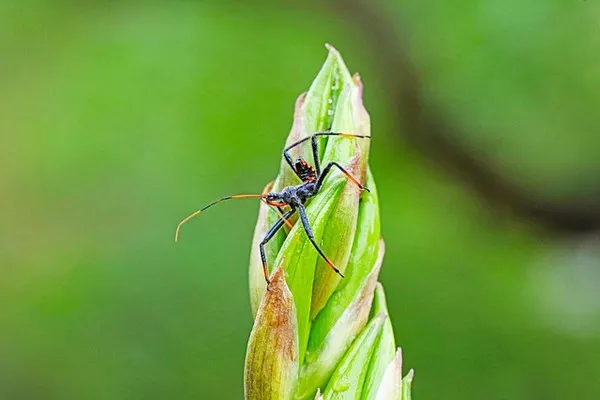Yucca plants, with their striking and architectural appearance, have become popular choices for both indoor and outdoor gardening enthusiasts. These hardy plants are known for their resilience, making them suitable for a wide range of environments. Whether you’re a seasoned gardener or a beginner, understanding the essential care requirements for yucca plants can help ensure their health and vibrancy. In this comprehensive guide, we’ll delve into the various aspects of yucca plant care to help you cultivate thriving specimens.
Understanding Yucca Plants
Before diving into the care routine, it’s important to familiarize yourself with yucca plants. These evergreen perennials belong to the Agavaceae family and are native to arid regions of North and Central America. Yuccas are characterized by their sword-like leaves, often edged with sharp spines, and their towering flower spikes that can add a dramatic touch to any landscape.
Selecting the Right Location
Yucca plants thrive in full sunlight, making them ideal for both indoor and outdoor settings. When choosing a location for your yucca, consider placing it near a south- or west-facing window if you’re growing it indoors. Outdoors, opt for a spot with plenty of direct sunlight, as this will promote optimal growth and flowering. Ensure that the area you choose has well-draining soil to prevent waterlogged roots, which can lead to root rot.
Soil Requirements
Yucca plants prefer soil that is well-draining and slightly acidic to neutral in pH. A mix of regular potting soil and sand can help achieve the desired drainage. If you’re planting yuccas in the ground, amending the soil with sand, gravel, or perlite can improve drainage and aeration. This is especially crucial in areas with heavy clay soil.
Watering
One of the most important aspects of yucca plant care is proper watering. Yuccas are drought-tolerant plants that have adapted to survive in arid conditions. As such, they are susceptible to root rot if overwatered. Allow the soil to dry out completely between watering sessions. Typically, yuccas require watering every 2 to 4 weeks, depending on the climate and season.
When watering, ensure that water reaches the root zone rather than just wetting the surface. Watering at the base of the plant can help prevent moisture from getting trapped in the center of the rosette of leaves, which can lead to rot. During the winter months, reduce the frequency of watering to accommodate the plant’s dormant phase.
Fertilization
Yucca plants don’t demand excessive feeding, but a balanced approach to fertilization can enhance their growth and appearance. During the growing season, which usually spans from spring to early fall, you can apply a diluted, balanced liquid fertilizer every 4 to 6 weeks. Be cautious not to over-fertilize, as this can lead to an excess of nutrients that might harm the plant.
Pruning and Maintenance
Pruning is an essential aspect of yucca plant care, as it helps maintain the plant’s shape and overall health. Remove any dead or yellowing leaves by cutting them close to the stem. Additionally, if the plant’s height becomes unmanageable or you want to encourage new growth, you can prune the main stem. Trim it back to a desirable height using sharp, clean pruning shears.
Dealing with Common Issues
While yucca plants are generally hardy, they can still encounter a few common issues that you should be aware of:
Pest Infestations: Yuccas can attract pests such as aphids, spider mites, and scale insects. Regularly inspect your plants for signs of infestation, such as discolored or distorted leaves, and treat them promptly with insecticidal soap or neem oil.
Yellowing Leaves: Yellow leaves are often a sign of overwatering or poor drainage. Adjust your watering schedule and soil mixture to address this issue.
Root Rot: Root rot can occur if the plant’s roots are consistently sitting in wet soil. Ensure that your yucca’s container has proper drainage holes and that it’s not sitting in water.
Lack of Flowering: Yucca plants typically produce tall, showy flower spikes in the spring or summer. If your yucca isn’t flowering, it might not be receiving enough sunlight or might be too young. Patience and proper care can encourage flowering over time.
Propagation
If you want to expand your collection of yucca plants, propagation is a cost-effective way to do so. Yuccas can be propagated through offsets, which are small shoots that emerge at the base of mature plants. Gently remove these offsets and plant them in well-draining soil. Keep the soil consistently moist until the new plants establish roots.
Winter Care
During the colder months, yucca plants may require a few adjustments to their care routine. If you’re growing yuccas outdoors in a region with freezing temperatures, consider covering the plants with a frost cloth or moving potted yuccas indoors to a cool, well-lit location. Reduce watering during this period, as the plant’s growth slows down.
Conclusion
Caring for yucca plants can be a rewarding experience, offering a touch of natural beauty and resilience to your space. By providing them with the right amount of sunlight, well-draining soil, and a balanced approach to watering and fertilization, you can ensure the health and vibrancy of your yucca plants. Remember to stay vigilant for any signs of issues such as pests or overwatering, and address them promptly to maintain the longevity of your plants. With proper care, your yucca plants can thrive and become striking focal points in your indoor or outdoor garden.


